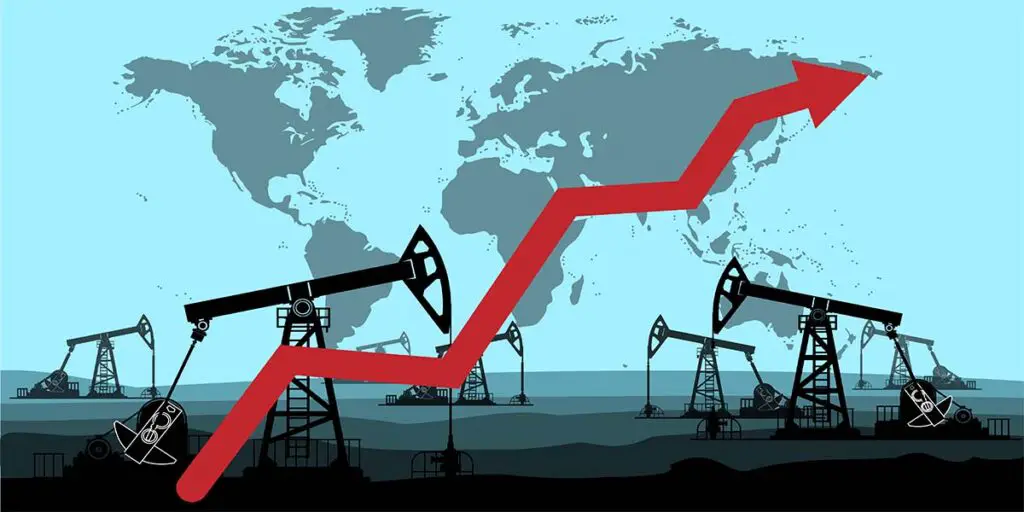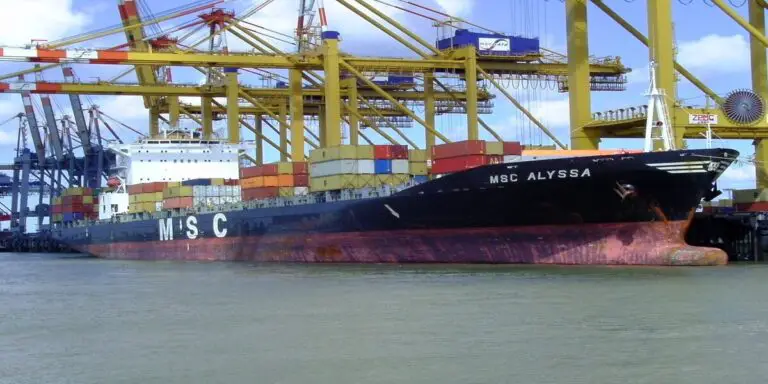How Much Does It Cost To Refuel A Cargo Ship? (A Lot!)
Most of us will have noticed that filling up our cars costs quite a bit more than it used to. While it’s true that a trip to the gas station can be expensive, think yourself lucky that you don’t have to fill up a cargo ship – it could cost you up to $16.5 million!
Of course, ships come in all sorts of sizes, and there are even different types of fuel that vessels can use.

The three main types of fuel used by ships are Heavy Fuel Oil (HFO), Marine Gas Oil (MGO), and Very Low Sulphur Fuel Oil (VLSFO). There can be a significant difference in the price and cleanliness of each.
The cost of refuelling a ship can vary wildly depending on which fuel is loaded:
| Ship Type | Refuelling Cost |
|---|---|
| Large Cruise Liner | $2.2m – 4.5m |
| Very Large Container Ship | $8m – 16.6m |
| Medium Tanker | $2.1m – $4.4m |
| Medium Bulk Carrier | $4m – $8.3m |
What are the different types of fuel that ships use?
Because of regulations introduced by the International Maritime Organization (IMO) in January 2020, all ships must burn fuel with a sulphur content of 0.5% or below.
Some areas of the world actually require ships to burn fuel with a sulphur content as low as 0.1%, which comes with additional costs for the shipowner.
Because of these tighter regulations, shipowners must now either fork out for Very Low Sulphur Fuel Oil, which should instantly satisfy the IMO’s requirements, or they can purchase Heavy Fuel Oil or Marine Gas Oil and run it through an onboard system called a scrubber which ‘cleans’ the exhaust gases and reduces the sulphur expelled when the fuel is burned.
There is some debate as to whether these scrubber systems are actually cost-effective, and not all ships use them.
How much fuel can ships carry?
The three main types of cargo ships are container ships, bulk carriers, and tankers. They come in many sizes.
Let’s take a look at the typical fuel capacity of each type of ship, with a cruise ship included for comparison:
| Ship Type | Fuel Capacity (m3) |
|---|---|
| Large Cruise Liner | 4,400 |
| Very Large Container Ship | 16,000 |
| Medium (Suezmax) Tanker | 4,200 |
| Medium (Panamax) Bulk Carrier | 8,000 |
So, how much does fuel cost?
There are hundreds of ports around the world where ships can load, or ‘bunker’, fuel to keep them running. For our example we are using the average bunker prices in Houston, Texas, over the last six months:
| Fuel Type | Average Price per Metric Tonne |
|---|---|
| Heavy Fuel Oil (HFO) | $556.50 |
| Marine Gas Oil (MGO) | $1151.50 |
| Very Low Sulphur Fuel Oil (VLSFO) | $769.50 |
These prices translate to the following total costs to completely fill up a ship’s fuel tanks:
| Ship Type | Fuel Capacity (m3) | HFO | MGO | VLSFO |
|---|---|---|---|---|
| Large Cruise Liner | 4,400 | $2.20m | $4.54m | $3.03m |
| Very Large Container Ship | 16,000 | $8.01m | $16.58m | $11.08m |
| Medium Tanker | 4,200 | $2.10m | $4.35m | $2.91m |
| Medium Bulk Carrier | 8,000 | $4.01m | $8.29m | $5.54m |
In reality, a ship will usually load more than one type of fuel as different types of machinery onboard may require different blends of fuel.
Do fuel prices for ships change much?
The market for ships’ bunkers is volatile and the price of bunkers has surged in the last decade.
The price of HFO hit a global average low of $144.50/tonne in January 2016. In May 2022, the global average price hit an all-time high of $745/tonne. This is an eye-watering increase of 416%.
There can also be a large difference in price depending on where fuel is loaded.
For example, on the day this article was written, one metric tonne of MGO would cost $854 in Piraeus, Greece, but only $559 in Rotterdam, Netherlands. This means that wise planning can save a shipowner thousands of dollars when choosing when and where to refuel their ships.
Ships’ Captains and Chief Engineers will never want to risk their vessel running out of fuel, so it is standard practice to load up to 50% more fuel than is necessary before beginning a voyage. This allows for increased consumption due to factors such as bad weather, currents, and rerouting.
How much fuel would it take for a cruise liner to cross the ocean?
According to Cunard, their ship Queen Elizabeth II consumes 433 tonnes for each of the six days it takes her to sail between New York and Southampton. This equals 2,598 tonnes of fuel.
If we assume that the Queen Elizabeth II is burning VLSFO, this would cost almost exactly $2,000,000 at current prices.
How much fuel would it take for a container ship to sail from Asia to Europe?
Let’s take a look at a very common voyage for a container ship – Singapore to Rotterdam.
There are two main routes for ships travelling between Singapore and Rotterdam – either through the Suez Canal, or around the Cape of Good Hope. Sailing through the Suez Canal can save a ship around 3,300 nautical miles – as long as it isn’t blocked!
We will assume that the ship sails through the Suez Canal, making the total voyage around 8,400 nautical miles.
CMA CGM Benjamin Franklin, one of the world’s largest container ships, consumes 330 tonnes of fuel per day at an average speed of 25 knots.
This means the journey would take her 14 days, costing around $3,550,000 if she was operating solely on VLSFO. Of course, smaller container ships would consume less fuel – but they also carry less cargo.

Is fuel one of the highest costs for shipowners?
Fuel is typically the single biggest expense when it comes to running a ship. It can account for around 50% of a ship’s total running costs, with crewing costs being the second highest expense.
This percentage can vary depending on where the fuel is loaded and whether or not the ship is sailing on an economical route.
An economical route is one where the ship may have following wind or tide, or can achieve a constant, fuel-efficient speed.
It is therefore economically vital that the ships’ officers can plan and execute a route which is both safe and economical.
